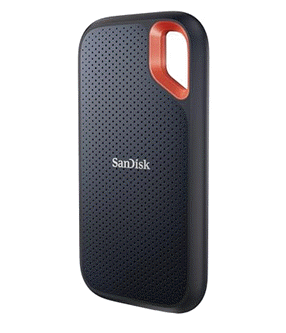2025-09-11 01:26:00
martinfowler.com
When you write tests against a web page, you need to refer to
elements within that web page in order to click links and determine
what’s displayed. However, if you write tests that manipulate the
HTML elements directly your tests will be brittle to changes in the
UI. A page object wraps an HTML page, or fragment, with an application-specific
API, allowing you to manipulate page elements without digging around
in the HTML.

The basic rule of thumb for a page object is that it should allow
a software client to do anything and see anything that a human can.
It should also provide an interface that’s easy to program to and
hides the underlying widgetry in the window. So to access a text
field you should have accessor methods that take and return a
string, check boxes should use booleans, and buttons should be
represented by action oriented method names. The page object should
encapsulate the mechanics required to find and manipulate the data
in the gui control itself. A good rule of thumb is to imagine
changing the concrete control – in which case the page object
interface shouldn’t change.
Despite the term “page” object, these objects shouldn’t usually
be built for each page, but rather for the significant elements on a
page . So a page showing multiple
albums would have an album list page object containing several album
page objects. There would probably also be a header page object and
a footer page object. That said, some of the hierarchy of a complex
UI is only there in order to structure the UI – such composite
structures shouldn’t be revealed by the page objects. The rule of
thumb is to model the structure in the page that makes
sense to the user of the application.
Similarly if you navigate to another page, the initial page
object should return another page object for the new page . In
general page object operations should return fundamental types
(strings, dates) or other page objects.
There are differences of opinion on whether page objects should
include assertions themselves, or just provide data for test scripts
to do the assertions. Advocates of including assertions in page
objects say that this helps avoid duplication of assertions in test
scripts, makes it easier to provide better error messages, and
supports a more TellDontAsk style API. Advocates of
assertion-free page objects say that including assertions mixes the
responsibilities of providing access to page data with assertion
logic, and leads to a bloated page object.
I favor having no assertions in page objects. I think you can avoid
duplication by providing assertion libraries for common assertions –
which can also make it easier to provide good diagnostics.
Page objects are commonly used for testing, but should not make
assertions themselves. Their responsibility is to provide access to
the state of the underlying page. It’s up to test clients to carry
out the assertion logic.
I’ve described this pattern in terms of HTML, but the same
pattern applies equally well to any UI technology. I’ve seen this
pattern used effectively to hide the details of a Java swing
UI and I’ve no doubt it’s been widely used with just about every
other UI framework out there too.
Concurrency issues are another topic that a page object can
encapsulate. This may involve hiding the asynchrony in async
operations that don’t appear to the user as async. It may also
involve encapsulating threading issues in UI frameworks where you
have to worry about allocating behavior between UI and worker threads.
Page objects are most commonly used in testing, but can also be
used to provide a scripting interface on top of an application.
Usually it’s best to put a scripting interface underneath the UI,
that’s usually less complicated and faster. However with an
application that’s put too much behavior into the UI then using
page objects may make the best of a bad job. (But look to move that
logic if you can, it will be better both for scripting and the long
term health of the UI.)
It’s common to write tests using some form of
DomainSpecificLanguage, such as Cucumber or an internal
DSL. If you do this it’s best to layer the testing DSL over the page
objects so that you have a parser that translates DSL statements
into calls on the page object.
If you have WebDriver APIs in your test methods, You’re Doing It
Wrong. — Simon Stewart.
Patterns that aim to move logic out of UI elements (such as Presentation Model, Supervising
Controller, and Passive
View) make it less useful to test through the UI and thus reduce
the need for page objects.
Page objects are a classic example of encapsulation – they hide
the details of the UI structure and widgetry from other components
(the tests). It’s a good design principle to look for situations
like this as you develop – ask yourself “how can I hide some details from the
rest of the software?” As with any encapsulation this yields two
benefits. I’ve already stressed that by confining logic that
manipulates the UI to a single place you can modify it there without
affecting other components in the system. A consequential benefit is
that it makes the client (test) code easier to understand because the
logic there is about the intention of the test and not cluttered by
UI details.
Further Reading
I first described this pattern under the name Window Driver. However since then
the term “page object” was popularized by the Selenium web testing
framework and that’s become the generally used name.
Selenium’s
wiki strongly
encourages using page objects and provides advice on how they
should be used. It also favors assertion-free page objects.
A team measured the times to update two versions of a suite of
selenium tests after a software upgrade. They found the version
with page object took a bit longer for the first
test case, but much faster for the rest. For more details see Leotta
et al, “Improving test suites maintainability with the page object
pattern”, ICSTW 2013
Acknowledgements
Perryn Fowler, Pete Hodgson, and Simon Stewart gave particularly
useful comments on drafts of this post – although as usual I owe
much to various denizens of Thoughtworks’s internal software
development list for their suggestions and corrections.
Keep your files stored safely and securely with the SanDisk 2TB Extreme Portable SSD. With over 69,505 ratings and an impressive 4.6 out of 5 stars, this product has been purchased over 8K+ times in the past month. At only $129.99, this Amazon’s Choice product is a must-have for secure file storage.
Help keep private content private with the included password protection featuring 256-bit AES hardware encryption. Order now for just $129.99 on Amazon!
Help Power Techcratic’s Future – Scan To Support
If Techcratic’s content and insights have helped you, consider giving back by supporting the platform with crypto. Every contribution makes a difference, whether it’s for high-quality content, server maintenance, or future updates. Techcratic is constantly evolving, and your support helps drive that progress.
As a solo operator who wears all the hats, creating content, managing the tech, and running the site, your support allows me to stay focused on delivering valuable resources. Your support keeps everything running smoothly and enables me to continue creating the content you love. I’m deeply grateful for your support, it truly means the world to me! Thank you!
|
BITCOIN
bc1qlszw7elx2qahjwvaryh0tkgg8y68enw30gpvge Scan the QR code with your crypto wallet app |
|
DOGECOIN
D64GwvvYQxFXYyan3oQCrmWfidf6T3JpBA Scan the QR code with your crypto wallet app |
|
ETHEREUM
0xe9BC980DF3d985730dA827996B43E4A62CCBAA7a Scan the QR code with your crypto wallet app |
Please read the Privacy and Security Disclaimer on how Techcratic handles your support.
Disclaimer: As an Amazon Associate, Techcratic may earn from qualifying purchases.




























































![SABRENT [3-Pack 22AWG Premium 6ft USB-C to USB A 3.0 Sync and Charge Cables [Black]…](https://techcratic.com/wp-content/uploads/2025/09/81SQ13LNwfL._SL1500_-360x180.jpg)











































